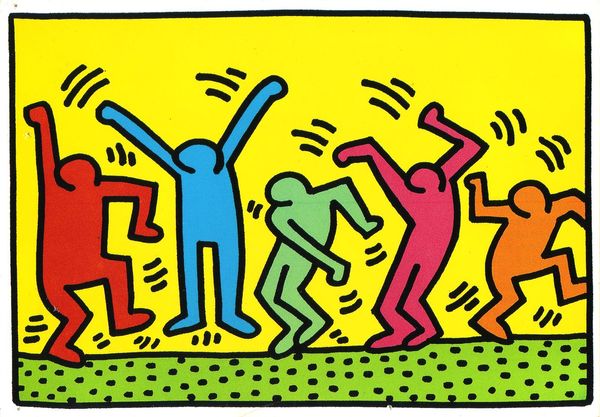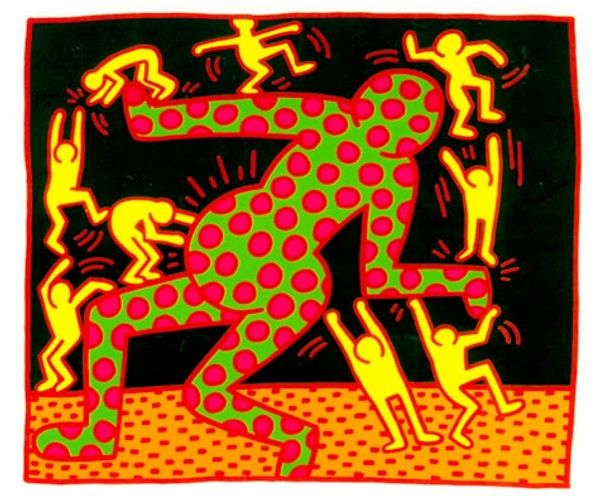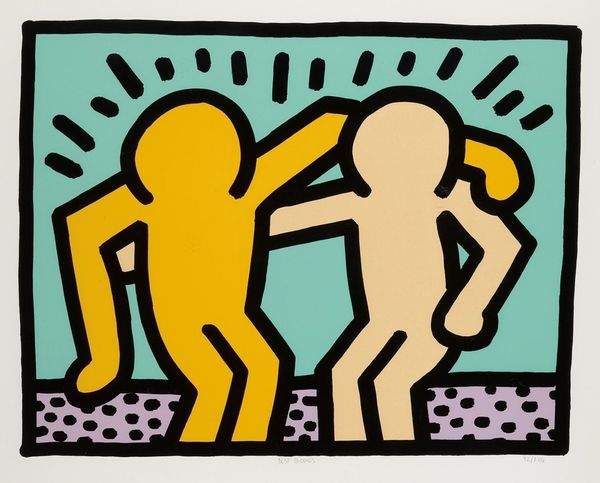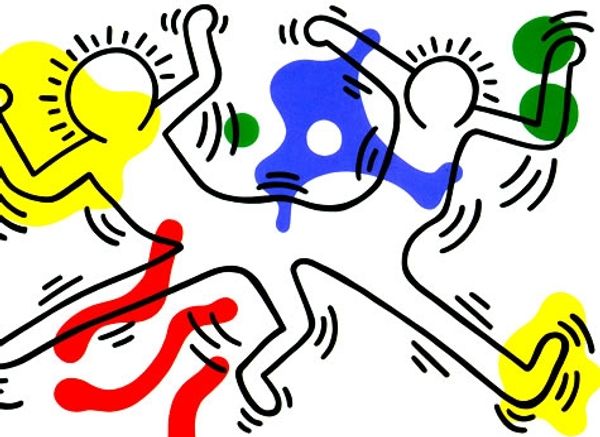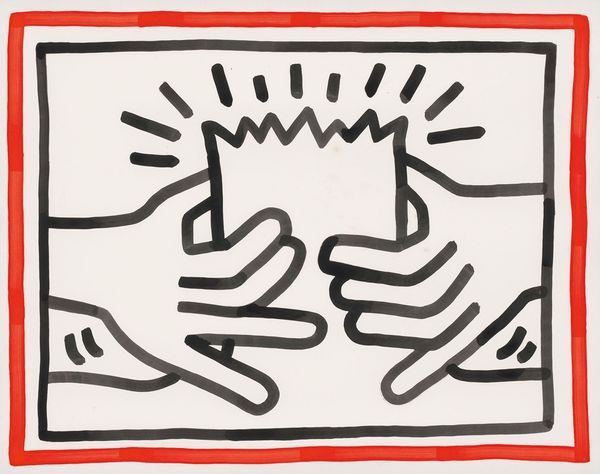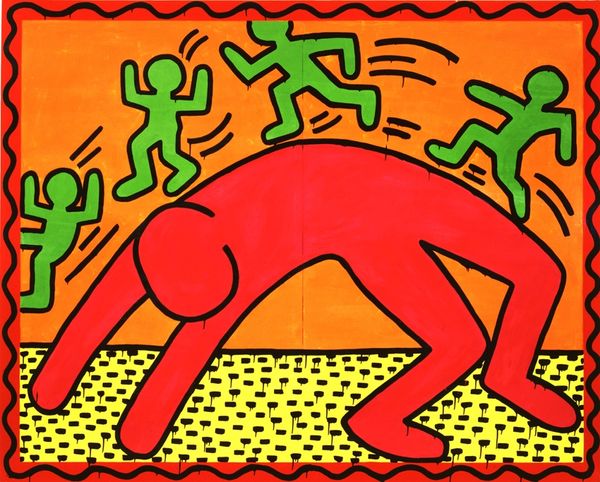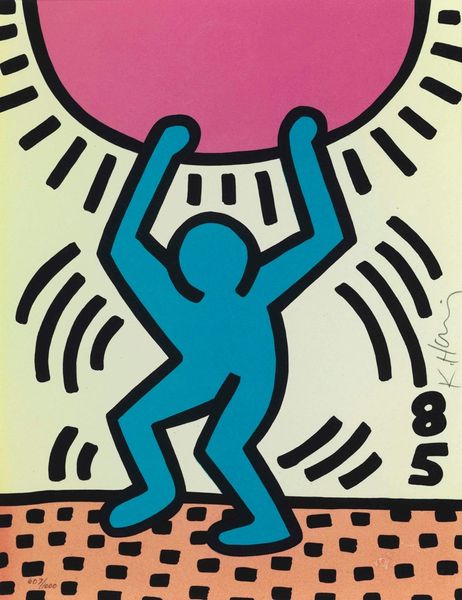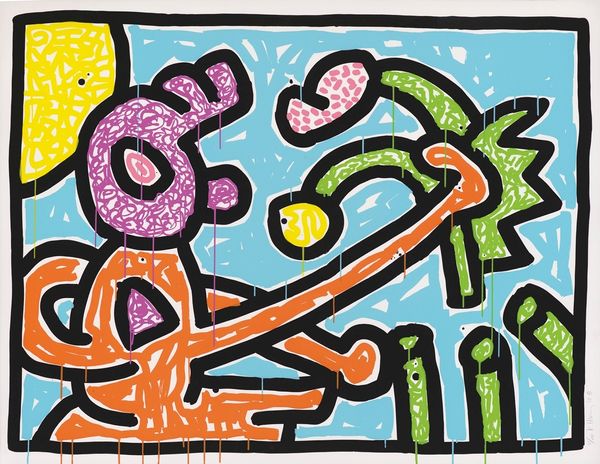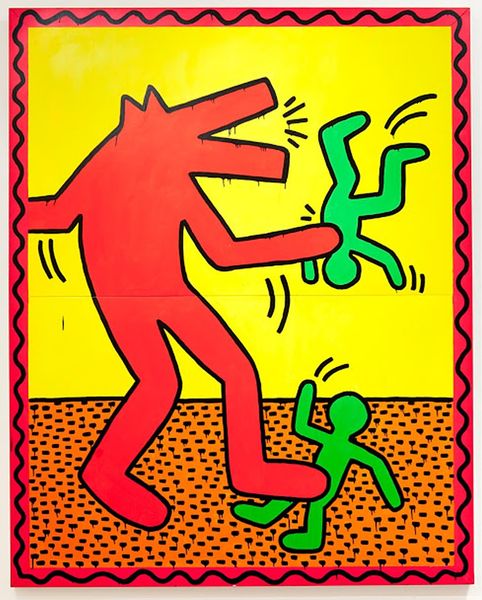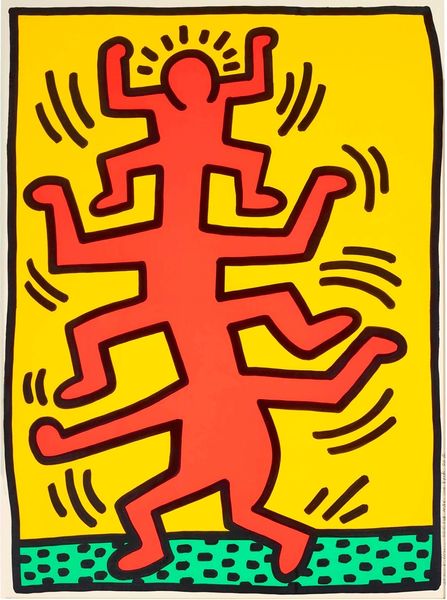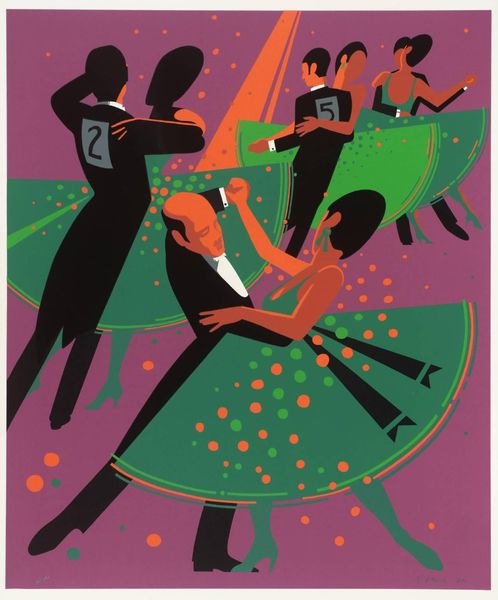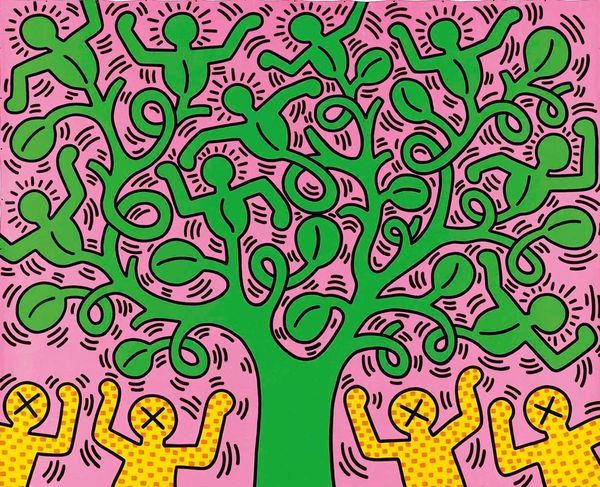
#
neo-pop
Copyright: Modern Artists: Artvee
Editor: So, here we have Keith Haring’s “The Fertility Suite; One Plate” from 1983, made with acrylic paint. The colors are so vibrant! And there are these stylized figures… What social narratives do you think Haring is playing with here? Curator: It's fascinating to consider this work within the socio-political context of the early 80s. Haring was deeply involved in New York's downtown culture, and his work often functioned as social commentary, even when appearing deceptively simple. Think about the rise of the AIDS epidemic then and Haring's own identity. Could the dancing figures represent a celebration of life in the face of such adversity? Or perhaps a commentary on societal pressures around procreation? Editor: That’s an interesting point! The figures are also pregnant. How might that connect with his broader social messages? Curator: Exactly! Considering the burgeoning feminist movement and debates around reproductive rights, are we seeing an empowered portrayal of women? Haring's art was profoundly public – think subway drawings – challenging who art was for and where it belonged. How does this "Fertility Suite," created for gallery walls, participate in that broader accessibility and commentary? The bright, almost childlike style serves to disarm, doesn’t it, while the subject matter invites more profound consideration. Editor: I see that tension now, between the accessible style and deeper themes. So, it's not just about fertility but also about its cultural representation. Thanks for helping me see that. Curator: Absolutely. Art history encourages us to question who is included and excluded from these narratives. Analyzing Haring's choices really illuminates that interplay between public perception, private experiences, and the politics of the art world.
Comments
No comments
Be the first to comment and join the conversation on the ultimate creative platform.
